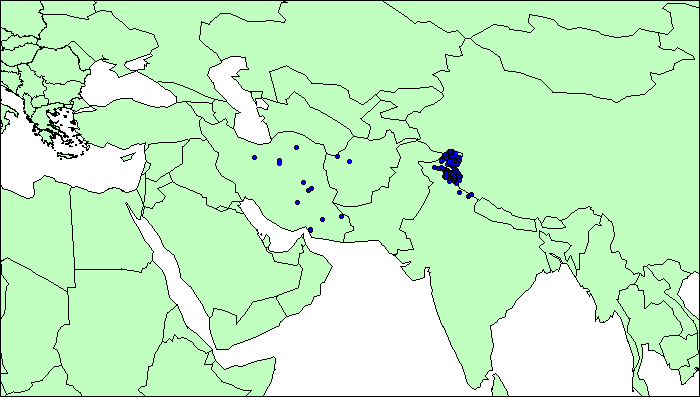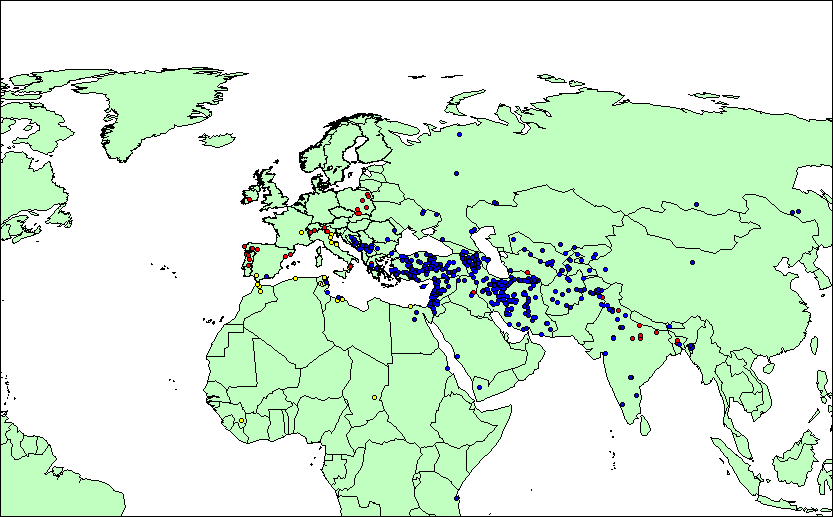The Indian Ocean Slave Trade
http://lrrc3.sas.upenn.edu/indianocean/group1/ioslv4.html

Sources and Destinations of African Slaves
[...] Owing to the native abundance of cheap labor in Asia, Asian demand for East African slaves always remained low. So, unlike the trans-Atlantic slave trade, Indian ocean slave traffic was sporadic and small in volume with two exceptiuons during the eigth to ninth centuries and the nineteenth century. During the 8th and 9th centuries labor demands increased with the reclamation of marsh land in Southern Iraq. In the 19th century the volume of slave traffic began to rise due to the demand for slaves on plantations on Zanzibar, Pemba, Reunion, Mauritius and Madagascar. In contrast to the tran-Atlantic slave trade the documentation for the total amount of slaves taken out of East Africa is fragmentary and uneven with the exception of the ninetennth century trade. Consequently, estimates for the total period are at best educated guesses. Some scholars estimate the total volume of the trade at four million with a constant yearly traffic of about five hundred to seven hundred. These figures spiked during the 7th and 9th centuries and the 19th century. During the 19th century the yearly traffic ranged from 3,000 to twenty thousand per year.[...]
[The unreferenced map in the online document is, most likely, taken from Clarence-Smith, William Gervase (ed). 1989. The Economics of the Indian Ocean Slave Trade in the Nineteenth Century. London and Totowa, N.J.: Frank Cass. - tmc]
Please note that the above details were correct on the day this post was published. To suggest an update, please email the site's editor at tmciolek@ciolek.com
Sources and Destinations of African Slaves
[...] Owing to the native abundance of cheap labor in Asia, Asian demand for East African slaves always remained low. So, unlike the trans-Atlantic slave trade, Indian ocean slave traffic was sporadic and small in volume with two exceptiuons during the eigth to ninth centuries and the nineteenth century. During the 8th and 9th centuries labor demands increased with the reclamation of marsh land in Southern Iraq. In the 19th century the volume of slave traffic began to rise due to the demand for slaves on plantations on Zanzibar, Pemba, Reunion, Mauritius and Madagascar. In contrast to the tran-Atlantic slave trade the documentation for the total amount of slaves taken out of East Africa is fragmentary and uneven with the exception of the ninetennth century trade. Consequently, estimates for the total period are at best educated guesses. Some scholars estimate the total volume of the trade at four million with a constant yearly traffic of about five hundred to seven hundred. These figures spiked during the 7th and 9th centuries and the 19th century. During the 19th century the yearly traffic ranged from 3,000 to twenty thousand per year.[...]
[The unreferenced map in the online document is, most likely, taken from Clarence-Smith, William Gervase (ed). 1989. The Economics of the Indian Ocean Slave Trade in the Nineteenth Century. London and Totowa, N.J.: Frank Cass. - tmc]
Please note that the above details were correct on the day this post was published. To suggest an update, please email the site's editor at tmciolek@ciolek.com




